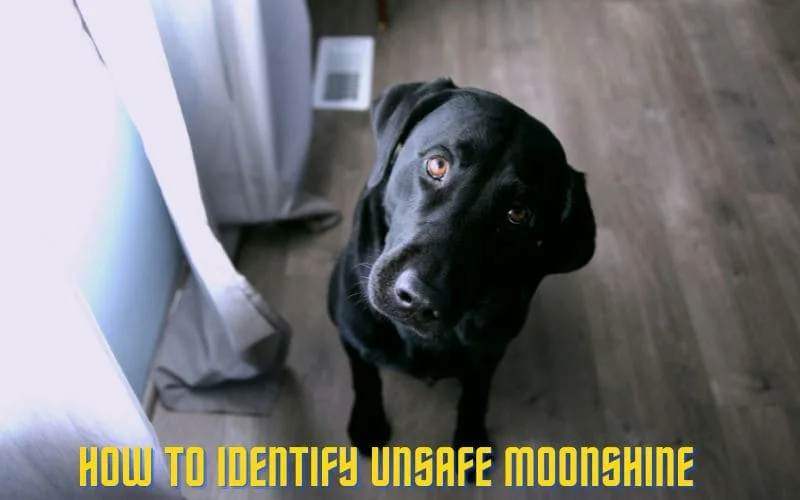How to Identify Unsafe Moonshine! You Better Get This Right!

Introduction
Welcome to our blog where we’ll shine a light on the mystique and charm of moonshine. In this article, we’ll delve into the risks and dangers of unsafe moonshine and explore how to spot it. We’ll also discuss regulations and safety guidelines to ensure the enjoyment of moonshine while prioritizing safety.
Answering the Question
Moonshine, a type of alcohol that is typically produced illicitly, carries numerous risks if not distilled properly. This article aims to answer the pivotal question: How can one identify unsafe moonshine to avoid the associated dangers? Let’s take an in-depth look.
Risks and Dangers of Unsafe Moonshine
Before understanding how to identify unsafe moonshine, it’s crucial to comprehend the serious risks and dangers it presents. The production of moonshine often involves the distillation of alcohol using unregulated and unmonitored methods, leading to the potential presence of harmful compounds such as methanol.
- Health Risks: Consumption of unsafe moonshine can lead to severe health risks, including blindness and even death. The presence of methanol, a toxic alcohol, is a significant concern as it can cause permanent damage to the optic nerve and other vital organs.
- Legal Ramifications: Engaging in the production or distribution of illicit moonshine carries significant legal risks. The unauthorized production and sale of alcohol often violate numerous laws and regulations, leading to potential fines, confiscation of assets, and even imprisonment.
- Environmental Impact: Illegal moonshine production can have detrimental effects on the environment. Improper disposal of waste and by-products can lead to pollution of water sources and damage to ecosystems, posing long-term risks to the surrounding environment and wildlife.
- Social Consequences: The consumption of unsafe moonshine can have adverse social effects on communities. Incidents of alcohol poisoning and related health issues can strain healthcare systems and disrupt community well-being.
How to Spot Unsafe Moonshine
Physical Characteristics
Unsafe moonshine may exhibit several physical characteristics that can offer vital clues regarding its safety. It’s essential to be aware of these signs to avoid consuming potentially harmful moonshine. Some of the physical characteristics of unsafe moonshine include:
- Inconsistent Appearance: Safe moonshine should have a clear and uniform appearance. However, if the moonshine appears cloudy, contains floating particles, or has unusual color variations, it may indicate impurities or contamination.
- Presence of Impurities: Impurities in moonshine can be observed through visual cues, such as sediments, residue, or unexpected substances floating within the liquid. These impurities may stem from improper distillation processes, inadequate filtration, or unsanitary handling.
- Irregular Texture: When inspecting moonshine, pay attention to its texture. Safe moonshine typically has a smooth and consistent texture, while unsafe moonshine may exhibit irregularities, such as slimy or gritty textures, indicating contamination or poor quality.
Understanding and recognizing these physical characteristics can aid in identifying potentially unsafe moonshine and making informed decisions about consuming or discarding the product.
Sensory Clues
When it comes to assessing the safety of moonshine, paying attention to sensory clues can provide valuable insights. These cues can help in identifying potential risks associated with consuming moonshine. Here are some sensory clues to be mindful of:
- Unpleasant or overly pungent odors
- Abnormal taste
- Adverse reactions upon consumption
Unpleasant or overly pungent odors may indicate the presence of harmful impurities or contamination in moonshine. An abnormal taste, especially one that is excessively harsh or unpleasant, can also be a warning sign. Moreover, experiencing adverse physical reactions after consuming moonshine, such as stomach discomfort or headaches, may suggest that the product is unsuitable for consumption.
It’s important to recognize that the sensory evaluation of moonshine is a critical aspect of ensuring its safety. By being aware of these sensory clues, individuals can make informed decisions regarding the suitability of moonshine for consumption.
Regulations and Safety Guidelines
Ensuring the safety of moonshine consumption involves adherence to regulations and established safety guidelines. These measures are designed to mitigate the inherent risks associated with moonshine and promote responsible enjoyment of this distilled liquor while safeguarding consumer health.
- Strict Monitoring and Compliance: Governments and regulatory bodies enforce strict monitoring and compliance with regulations related to alcohol production and consumption. This includes licensing, permits, and adherence to quality standards.
- Quality Control Measures: Implementing stringent quality control measures in the production and distribution of moonshine is essential for ensuring that the product is safe for consumers. This involves testing for impurities, proper labeling, and packaging standards.
- Consumer Education: Educating consumers about the potential risks of moonshine consumption and the importance of purchasing from reputable sources can contribute to improving safety. This includes providing information about the harmful effects of counterfeit moonshine and the health risks associated with unregulated products.
For a Custom Moonshine Still Click Here To Contact Us With Your Needs
No Need To Worry! We Don’t Report Anything To Any Goverment Agency!
Conclusion
In conclusion, recognizing the risks and dangers posed by unsafe moonshine is paramount to protecting consumers. By understanding the physical and sensory indicators of unsafe moonshine and adhering to regulations and safety guidelines, individuals can partake in the tradition of moonshine while prioritizing safety. Stay informed, stay safe, and savor moonshine responsibly.
